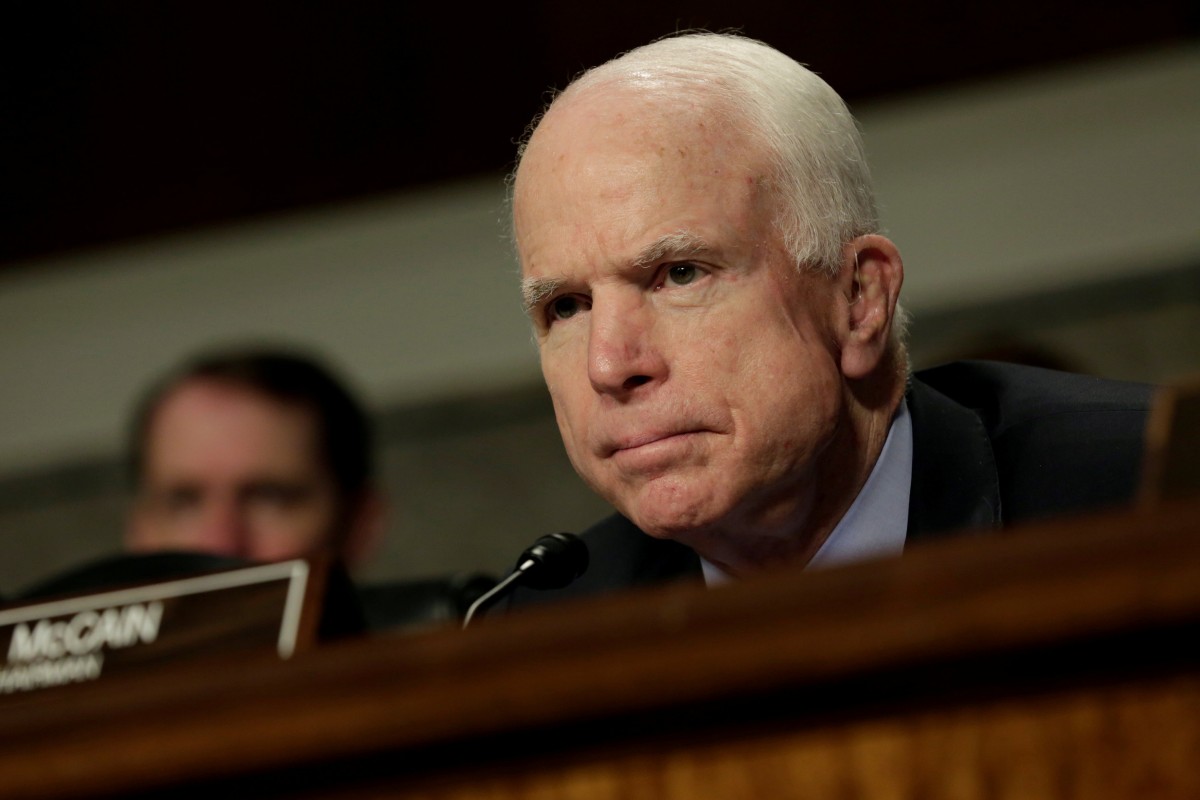
Sen. John McCain’s tumour is one of the most aggressive forms of brain cancer, and his family and doctors are deliberating next treatment options
 Senator John McCain has been diagnosed with a brain tumour.
Senator John McCain has been diagnosed with a brain tumour.Sen. John McCain’s tumour is one of the most aggressive forms of brain cancer, and his family and doctors are deliberating next treatment options.
The senator had undergone surgery last week to have a blood clot removed from above his left eye, and that clot turned out to be a sign that a tumor called a glioblastoma had begun growing.
Here are some things to know:
Aggressive cancer
McCain’s doctors at the Mayo Clinic said they managed to remove all the tumour that was visible on brain scans. But this kind of tumour, formally known as a glioblastoma multiforme, is aggressive and sneaky. It puts out microscopic roots that go deeper into brain tissue, explained Dr. Joshua Bederson, chairman of neurosurgery at Mount Sinai Health System in New York, who has no direct knowledge of McCain’s care.
Still, a tumour above the eye is in a location that permits removal with far less risk of damage to language, motor and other brain functions than in many other areas, he noted.
Surgery is usually not enough
McCain’s Mayo doctors said the senator’s next treatment options may include a combination of chemotherapy and radiation.
That’s standard, and the care can take weeks to months. Even among those who respond to initial treatment, the cancer can come back, and often within 12 to 24 months. The American Cancer Society puts the five-year survival rate for patients over 55 at about 4 percent.
Mount Sinai’s Bederson tells his own glioblastoma patients that he knows they’ll look up the grim statistics, but he wants them to remember that some people do beat the odds for long periods.
“It’s a small number. But that’s the hope my patients have when they leave my office,” he said.
Uncommon tumours
Glioblastomas (GLEE’-oh-blas-TOH’-muhs) typically occur in adults, and are fairly rare. According to the American Brain Tumour Association, an estimated 12,390 new cases are expected to be diagnosed this year.
McCain is a long-term survivor of melanoma, a deadly skin cancer. But doctors classified this new cancer as a “primary tumour,” meaning it’s not related to his former malignancies.
New approaches
Scientists are trying new approaches to treat glioblastomas. Doctors are testing a novel treatment that uses the patient’s immune system to attack the cancer. The treatment, called CAR-T cell therapy, has been used for blood cancers, but its value for solid tumours like brain tumours is unknown. A cap-like device that makes electric fields to fight cancer has been shown to improve survival odds for people with glioblastomas.